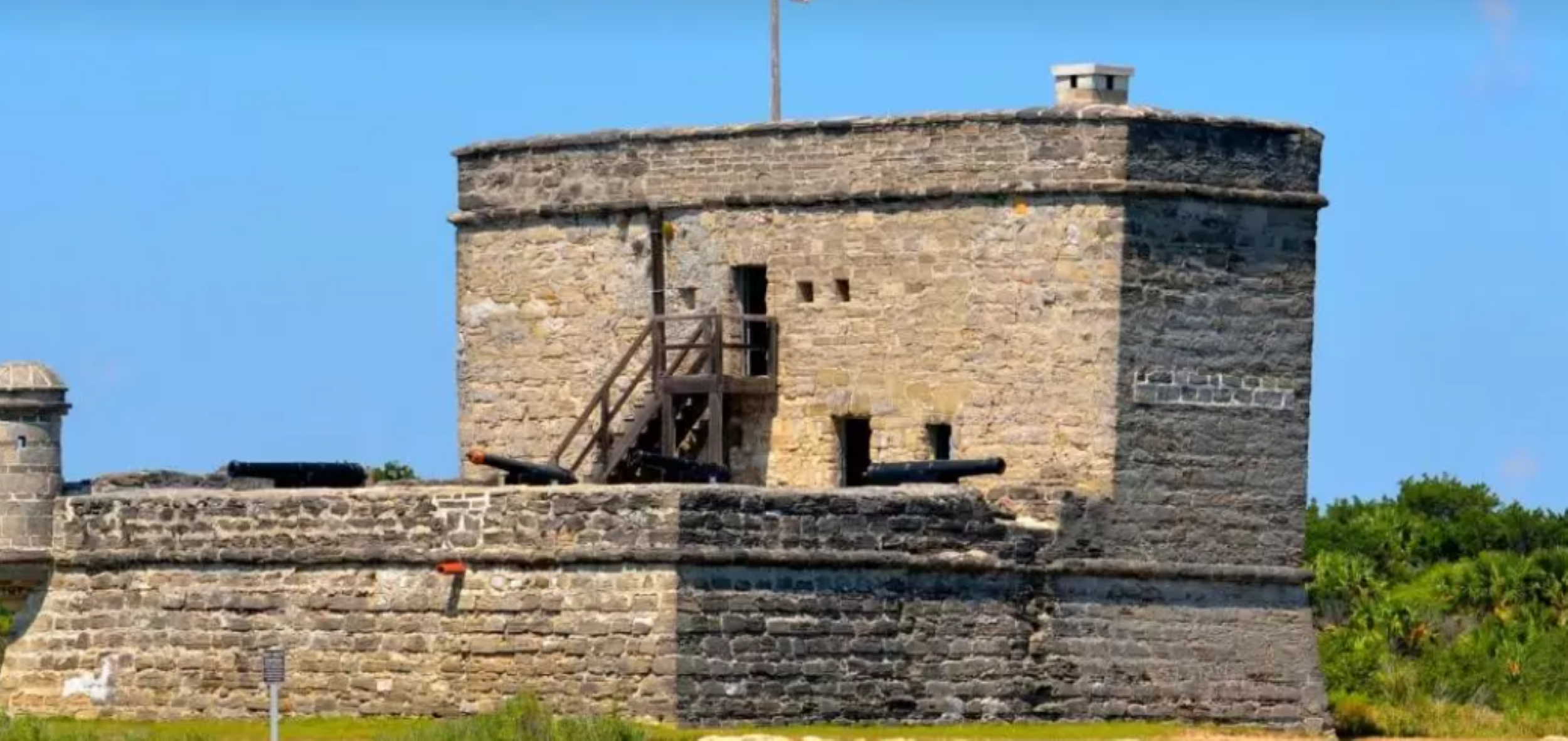
Features Summary
- Preserves the historic 1742 coquina watchtower and protects 300 acres of dunes, marshlands, maritime forest, and wildlife
- Offers visitors an immersive experience combining Florida’s colonial history with natural exploration
- Provides ferry tours to the fort, with regular historical reenactments and weapon-firing demonstrations
- Family-friendly nature trails through maritime forest and marsh ecosystems for wildlife observation
Inspiring Visitors to Explore Florida's Colonial Heritage
Fort Matanzas National Monument, operated by the National Park Service, preserves the historic coquina watchtower and protects approximately 300 acres of surrounding natural landscapes. These include dunes, marshlands, maritime forest, and the diverse wildlife that inhabits them. The park allows visitors to engage with the natural environment and Florida's colonial history in a single visit.
Fort Matanzas National Monument
Constructed in 1742 to protect St. Augustine from British invasion, Fort Matanzas has stood guard over the Matanzas Inlet for over two and a half centuries. As a lasting symbol of Florida's Spanish colonial history, President Calvin Coolidge officially designated the fort a national monument on October 15, 1924. Today, the site is preserved and operated by the National Park Service.
The Legacy of Fort Matanzas
Fort Matanzas carries a name and legacy rooted in a dramatic chapter of Florida's early history. In 1565, Spanish admiral Pedro Menéndez de Avilés ordered the execution of more than 250 French Huguenots at this inlet, including the explorer Jean Ribault. The Spanish later named the area "Matanzas," meaning "slaughters," because of the event.
Before the stone fort was erected, it's believed that a wooden watchtower stood in its place to guard the inlet, often referred to as the "back door" to St. Augustine. However, the increased British naval activity along the Florida coast in the 1740s prompted the Spanish to construct the more permanent Fort Matanzas.
With its impenetrable coquina walls and strategic location, the fort defended Spain's territorial claims in the New World. Today, Fort Matanzas stands as a solemn witness to centuries of conflict, cultural exchange, and colonization, offering visitors a deep and multifaceted look at Florida's past amidst the beauty of its preserved natural surroundings.
Visitor-Friendly Amenities and Scenic Nature Trails
A nature trail winds through the maritime forest and along the highest point of the barrier island, known as a hammock, providing scenic views and opportunities for wildlife observation. Another unpaved trail meanders through the marsh, allowing visitors to explore this unique ecosystem up close. Both trails are under a mile long, making them accessible and family-friendly.
Near the visitor center, guests can relax at shaded picnic tables and use public restrooms. Additional beach access is available across A1A, with a separate parking area for the Atlantic shoreline.
The park's amenities include ferry rides to the Fort Matanzas Monument (except Tuesdays and Wednesdays), where guided tours and regular historical reenactments take place. Fishing is permitted both in the Matanzas River and along the ocean shoreline.
Reenactors often bring the past to life through demonstrations and storytelling, especially in summer. On select weekends, visitors can witness weapon-firing demonstrations highlighting the fort's defensive history.